Safety of Life at Sea (SOLAS) – The Ultimate Guide
The maritime industry’s most important concerns are the Safety of personnel and the prevention of marine pollution for smooth cargo transportation and marine operation on high seas.
To achieve this, the International Maritime Organization (IMO) relies on its two very strong pillars: SOLAS & MARPOL – The International Conventions for safeguarding human life and the marine environment from all kinds of pollution and accidents.
Read: MARPOL – The Ultimate Guide
What is SOLAS Convention?
SOLAS is an abbreviation, and SOLAS stands for “Safety Of Life At Sea”. It is an international maritime treaty, also known as the SOLAS Convention or International Convention for the Safety of Life at Sea (SOLAS), which establishes the least safety measures in the construction, equipment and operation of merchant ships.
IMO SOLAS 74, the last adopted revised convention of 1974, includes several regulations under different SOLAS chapters, which deal with safety precautions and procedures starting from the ship’s construction to real emergencies like – “Abandon Ship”. The convention is updated to meet the safety norms in the modern shipping industry from time to time.
This article explains the contents of SOLAS chapters and regulations, providing a summary of SOLAS, i.e. different chapters of SOLAS and the rules they carry. Marine Insight has provided links to various articles which will help the readers to understand how the regulation of the SOLAS Annexes is implemented on a seagoing vessel and the importance of SOLAS.
Download Practical Maritime eBooks With Amazing Bonuses:
Here are a few fantastic ebooks to get important maritime information in the next few minutes!
14 Main Chapters Of SOLAS
The SOLAS 1974 international maritime treaty comprises 13 chapters, and each chapter has its own set of regulations. The following is the list of SOLAS’s 14 chapters and the regulations they contain:
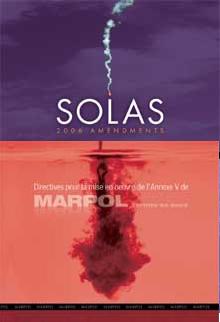
The International Convention for the Safety of Life at Sea (SOLAS), 1974 describes the requirement for all merchant ships of any flag state to comply with the minimum safety norms laid down in the chapters, which are as follows:
Chapter I – General Provisions: Surveys and certification of all the safety items etc., are included.
Chapter II-1 – Construction – Subdivision and stability, machinery and electrical installations: Deals with watertight integrity of the ship, especially for passenger vessels.
Chapter II-2 – Fire protection, fire detection and extinction: This chapter elaborates on the means and measures for fire protection in accommodation, cargo spaces and engine rooms for passenger, cargo and tanker ships.
Chapter III – Lifesaving appliances and arrangements: All the lifesaving appliances and their use in different situations are described.
Chapter IV – Radio communications: Includes requirements of GMDSS, SART, EPIRB etc., for cargo and passenger vessels.
Chapter V – Safety of navigation: This chapter deals with all the seagoing vessels of all sizes, from boats to VLCCs, and includes passage planning, navigation, distress signal etc.
Chapter VI – Carriage of Cargoes: This chapter defines the storage and securing of different cargo and containers but does not include oil and gas cargo.
Chapter VII – Carriage of dangerous goods: Defines the International Maritime Goods Code for storing and transporting hazardous goods.
Chapter VIII – Nuclear ships: The code of Safety for a nuclear-propelled ship is stated in this chapter.
Chapter IX – Management for the Safe Operation of Ships: The International Safety Management Code for ship owners and operators is described clearly.
Chapter X – Safety measures for high-speed craft: safety code for high-speed craft is explained.
Chapter XI-1 & 2– Special measures to enhance maritime Safety: Special and enhanced survey for safe operation, other operational requirements and ISPS code is briefed in this chapter.
Chapter XII – Additional safety measures for bulk carriers: Includes safety requirements for above 150 meters length bulk carriers.
Chapter XIII – Verification of Compliance
Chapter XIV -Safety Measures for Ships Operating in Polar Waters
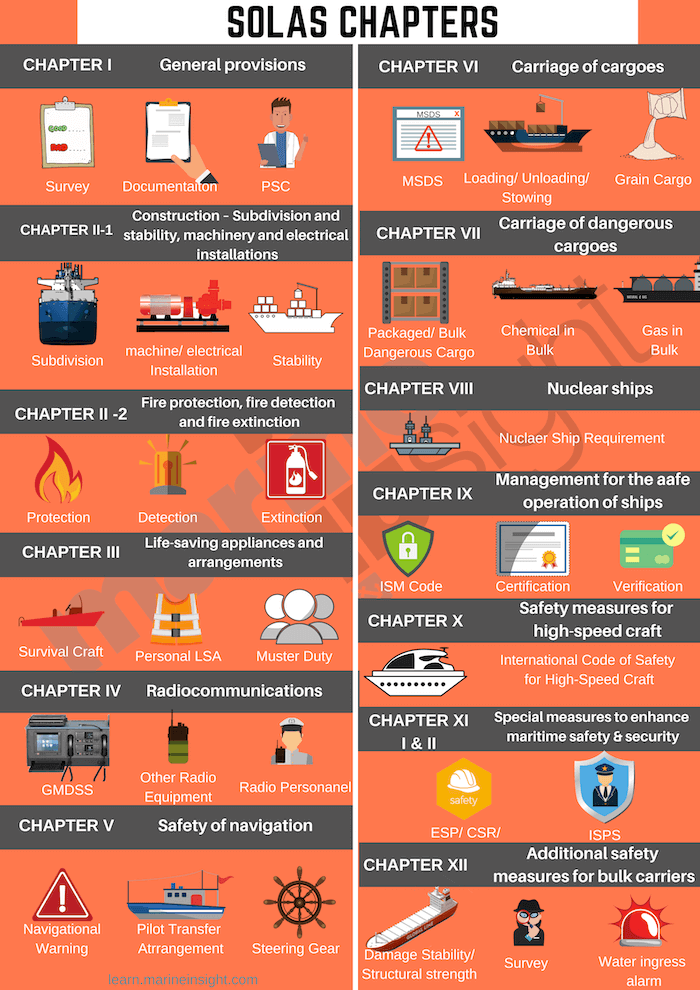
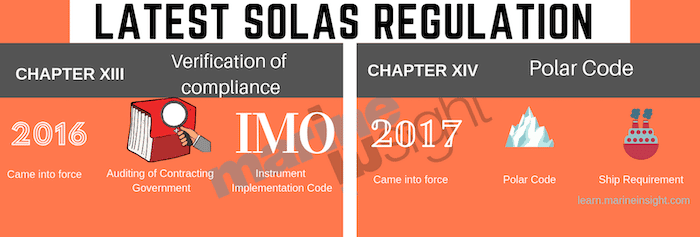
What is the Purpose Of Each SOLAS Chapter?
SOLAS Chapter I
In the SOLAS Chapter 1, General Provisions, Surveys and certification of all the safety items, structure, machinery etc. are included.
This chapter is further subdivided into three parts- Part A, Part B and Part C.
Part A contains five regulation that explains the “Application” of this chapter in different types of ship, along with the “Definition” of varying terminology which is used in the chapter. The regulation may not apply to all kinds of vessels; hence a separate section for “Exceptions” and “Exemptions” is also provided.
All the SOLAS chapters cover a minimum criterion for seagoing ships, regardless of their location and nationality. It is possible that the material or appliances available in one country are not available for the ship in another country. An “Equivalent” Section is also provided to deal with such a situation.
Part B contains the important regulations informing about surveys and certificates seagoing ships need to have to be said compliant with SOLAS. For this, 15 regulations are kept under Part B. Regulation 6 to Regulation 11 provide details of different survey requirements on other ships, equipment, machinery etc., clauses on how to do the repair and what kind of surveys to go through.
Related Read: A List of Inspections And Surveys Deck Officers On Ships Should Be Aware Of
What is the Harmonised Survey System for Ships?
Regulation 12 to Regulation 18 explains the different requirements for certification obtained post-surveys.
Related Read: 40 Ship Certificates and Documents that are Checked in a Port State Control (PSC) Survey
Regulation 19 – Control: This regulation explains the jurisdiction of local government a foreign ship is voyaging, such as the coast guard, port state etc., to inspect the vessel to ensure its Safety. It also explains the step to be taken by the government authorities to notify the concerned (next port of call, owner, class etc.) and how to exercise control.
Related Read: The Ultimate Guide to Port State Control (PSC) Inspection on Ships
Regulation 20 – Privileges: this regulation explains if the ship can or cannot claim any privileges depending upon the certificates it holds.
Part C of Chapter 1 contains only one regulation, i.e. Regulation 21, which explains how a contracting government can carry out an inquiry for the ship which was involved in an incident and causalities and what kind of information needs to be collected and to be passed through.
Related Read: 10 Important Things To Do During Ship Collision Accident
How P & I Clubs Work – Procedure for Accident Response
SOLAS Chapter II-1
Construction – Subdivision and stability, machinery and electrical installations: This chapter of SOLAS Deals with the watertight integrity of the ship, including the passenger’s vessel and comprises 7 parts, explaining the requirement for structural, machinery, electrical, stability and other criteria for a safe ship.
Part A contains 3 regulations that explain the “Application” of this chapter on ships as per their keel laying. The regulations explain the “Definition” of different terminology used in the chapter.
Part A-1 comprises regulations explaining the requirement for the ship’s structure, including protective coating, towing arrangements, deck equipment fittings, construction and drawings etc. It also includes the regulation on providing access to different parts of oil tankers and bulk carriers and the structure access manual, which contains the details of the structure, including access plans. The method to construct a ship that complies with the regulation for protection against noise is also included.
Related Read: Preparations For Emergency Towing Of Ship – 10 Important Points
Part B of this regulation explains the stability and watertight integrity requirement. Under Part B 1, the regulations (Regulations 5 to 8) define the necessary conditions for maintaining the intact stability of the cargo ship and passenger ship. It also includes a requirement on the information supplied to the master on the vessel’s stability, explaining how to calculate the stability factors in different conditions.
Related Read: Understanding Watertight Bulkheads In Ships: Construction and SOLAS Regulations
Ship Stability – What Makes a Ship Unstable?
Part B 2 comprises four regulations (Regulation 9 to 17) which take care of the watertight integrity of the ship (both passenger and cargo ship) by enlisting the constructional and testing requirements of watertight and other critical bulkheads and the provision of the double bottom on ships other than tanker ships.
Related Read: How to Test and Maintain Cargo Hatch Cover of a Dry Ship?
Designing A Ship’s Bottom Structure – A General Overview
Part B 3 explains the subdivision load line assignment requirement for passenger ships.
Part B 4 of this chapter comprises seven regulations ( Regulation 19 to Regulation 25) for the requirement of stability management, explaining the inspections, preventions, damage control drills, and information for cargo and passenger ships.
Part C focuses on different machinery installations in the engine room, including the requirement of emergency installations in the passenger ships from regulation 26 to regulation 39.
Related Read: 5 Stages Of Marine Machinery Installation On Ships
Part D of this chapter (from regulations 40 to 45) focuses on the electrical installation requirement for cargo and passenger ships, including the emergency source and arrangements, along with electrical Safety and hazards.
Related Read: How to Install Electronic Circuits on Ship?
How is Power Generated and Supplied on a Ship?
Part E explicitly clarifies the requirement for unattended machinery space under regulations 46 to 54.
Related Read: Preparation for UMS Operation On Ships
Part F of this chapter details the alternative design and arrangement for the ship’s machinery and electrical system under regulation 55. It also explains the storage and distribution requirement for the low flashpoint fuel system.
Part G explains the application and requirements per regulations 56 and 57 for ships using low flash point fuels.
Related Read: How to select Marine Fuel Oil and Factors Necessary for Fuel Oil System
SOLAS Chapter II-2
Fire protection, detection and extinction: This chapter elaborates on the means and measures for fire protection in accommodation, cargo spaces and engine rooms for passengers, cargo and tanker ships. This chapter is divided into seven parts, explaining the various requirement for fire safety systems installed on a ship.
Part A contains regulations 1 to 3, which explain the “Application” of this chapter on ships’ construction. These regulations also explain the “Definition” of different terminologies used in the chapter and the objective and functional requirements of this chapter.
Part B of this chapter specifies the requirement to prevent fire and explosion on cargo ships, including tankers. It has three regulations from Regulation 4 to regulation 6. Regulation 4detailsf how to prevent the ignition of a combustible source present on boats, including the limitations and arrangements on the use of fuel and lube oils used onboard and the prevention of fire in the cargo areas of the tanker ship.
Regulation 5 laid down the requirement to curb the growth of the fire in different spaces on the ship, which includes cutting any one side of the fire triangle, i.e. to control either air supply, oil supply or the heat source (using protection materials like insulation, linings etc.) in the potentially hazardous space.
Related Read: 16 Fire Fighting Appliances and Preventive Measures Onboard Ships
Regulation 6 of this part focuses on reducing hazards to human life from products that release smoke and toxic gases (such as paint, varnish, etc.).
Related Read: 20 Hazards On Oil Tanker Ship Every Seafarer Must Know
Part C of this chapter comprises five regulations (Regulation 7 to Regulation 11) and focuses on the requirement to suppress the fire at the earliest, including detection and control of smoke and flames, containment requirements, and the structural integrity of the space to prevent spreading of fire and firefighting systems and equipment to be used on ships machinery, accommodation and cargo spaces.
Related Read: Basics of Fire Prevention Onboard Ships
Part D focuses on the escape of the seafarers or passengers in case of fire or any other emergency. Regulation 13 explains the various requirement for means of escape for different types of ships (cargo ship, passenger ship, RoRo ship etc.), equipment and systems which helps in escaping from dangerous place etc.
Part E of chapter II-2 consist of Regulation 14 to regulation 16, providing information on the maintenance of the fire detection, fighting, and control equipment on cargo ships, including tankers and passenger ships. It also explains the requirement for training and drills to be carried out on fire safety on board ships. Regulation 16 focuses on the fire safety booklet, which should be kept on board ships for all vessels.
Related Read: The importance of fire drills on ships
Part F of this chapter details the alternative design and arrangement for the ship’s fire safety under regulation 17.
Related Read: A Brief Overview of Fire Control Plan on Ship
Part G contains a special requirement for the operations carried out on the tanker and bulk carrier ships, such as helicopter operations (Regulation 18), giving details of different construction, Safety and firefighting arrangements. Regulation 19 provides safety measures for carrying dangerous goods in containers, bulk, tanker or Roro ships.
Related Read: 16 Fire Fighting Appliances and Preventive Measures Onboard Ships
Regulation 20 focuses on ships carrying a vehicle as cargoes and passengers, explaining the prevention, detection, and containment of fire on such ships. Regulations 21, 22 and 23 are passenger-centric, describing the requirement a passenger ship should follow in case of a fire incident onboard ship to save passengers and ship from a major accident.
Related Read: DNV GL: Enhancing Fire Safety On Ro-Ro Decks
SOLAS Chapter III
Lifesaving appliances and arrangements: All the lifesaving appliances and their use in different situations according to the ship type are described in this chapter.
This chapter comprises 3 Parts. Part A contains five regulation that explains the “Application” of this chapter in different types of ship, along with the “Definition” of different terminology which is used in the chapter. The regulation may not apply to all kinds of vessels; hence a separate section for “Exceptions” and “Exemptions” is also provided. Further, onboard testing and production testing procedures are also explained.
Part B comprises a total of 32 regulations (from Regulation no. 6 to 37) dealing with the requirements of lifesaving appliances on passenger and cargo ships. Regulation 6 describes the communication appliance (Radio, Pyrotechnics etc.) used for safety and lifesaving situations on vessels.
Related Read: What Are PyroTechnics on Ship?
History of Maritime Distress Signals
Regulation 7 lists the requirement for personal lifesaving appliances such as lifejackets, lifebuoys, immersion suits etc.
Related Read: Everything You Ever Wanted to Know About Life Jackets on Ships
Regulation 8 to Regulation 11 contains the instruction on muster station, survival craft operation and man, and their embarkation arrangements explaining the different requirements.
Related Read: Liferafts on Ships: SOLAS Requirements, Safety Features & Launching Procedure
Regulation 12 explicitly addresses the location of survival craft in a cargo ship (other than free fall lifeboat). Regulations 13 to 17 detail the stowage and necessary arrangement required for the lifeboat, liferaft, marine evacuation system, recovery boat on the ship and Man Overboard Operation.
Related Read: Types of Lifeboats Used On Ship
Regulation 18 lists the requirement for line throwing appliances used on the ship. Regulation 19 deals with various training and drill requirements for the onboard crew.
Regulation 20 applied to all the ships for operational readiness, maintenance and survey requirement of survival crafts and other lifesaving appliances onboard the ship.
Related Read: Preparation For Safety Equipment Survey On Ships
Life Raft Repair Services and Maintenance Procedures: A General Overview
Regulation 21 to Regulation 30 tell about the additional requirement for passenger ships about survival crafts and all lifesaving appliances on the passenger ships, including drills for passengers onboard ship and helicopter operation in a passenger ship (ro-ro passenger ships of 130m in length should be provided with a helicopter landing area).
Related Read: Cruise Ship Passenger Drill Requirements Come Into Force On 1 January 2015
Regulation 31 to Regulation 34 tells about the additional requirement for cargo ships about survival crafts and all lifesaving appliances on the ships.
Regulation 35 to 37 contains various instructions for onboard maintenance, muster lists etc. and the availability of training manual and other onboard training aids on the ship.
Related Read: Important Features of Muster List on Ship
Part C of this chapter details the alternative design and arrangement for the ship’s lifesaving appliances under regulation 38.
SOLAS Chapter IV
Radio communications: This chapter Includes requirements of different radio communication equipment used on board ships, such as GMDSS, SART, EPIRB etc., for cargo and passenger vessels. This chapter is divided into three parts; Part A, Part B and Part C.
Part A contains regulations 1 to 4, which explain the “Application” of this chapter. The rules also explain the “Definition” of different terminology used in the chapter and the objective and functional requirements of this chapter. Further, it includes the exemptional provision and the details of GMDSS satellite providers.
Related Read: SOLAS requirement for Global Maritime Distress Safety System (GMDSS)
Part B consisted of Regulation 5 explaining the provisions of radiocommunication services and the identities of GMDSS by the contracting government.
Related Read: How to get a GMDSS Endorsement Certificate?
Part C insists on the ship-based requirement for the radio equipment and comprises 13 regulations. Regulation 6 details radio installation requirements on all types of ships. Regulation 7 details different radio equipment minimum requirements to be used on ships.
Related Read: What Marine Communication Systems Are Used in the Maritime Industry?
Regulations 8 to 11 detail radio installation capability to initial ship-to-shore communications and alerts in Sea areas A1, A2, A3 and A4.
Related Read: Introduction to Global Maritime Distress Safety System (GMDSS) – What You Must Know
Regulation 12 lists down the additional duties of the officer on radio communication equipment during a watch.
Related Read: Obsolete-yet-Famous Marine Jobs: Radio Officers
Regulation 13 details the energy source for all the radio communication equipment, including emergency reserve source of power and battery power.
Related Read: 20 Points To Consider For Handling and Taking Care of Batteries On Ships
Regulation 14 and 15 gives the details of performance standards and maintenance required to be carried out on radiocommunication equipment.
Related Read: Daily, Monthly And Weekly Tests Of GMDSS Equipment On Board Ships
Regulation 16, 17 and 18 provide the need for radio personnel qualification and different records and logs, which needs to be updated in the ship log system.
Related Read: Important Points For Logbook Keeping On Ships
SOLAS Chapter V
Safety of navigation: This chapter consists of 35 regulations dealing with all the seagoing vessels of all sizes, from boats to VLCCs, and includes passage planning, navigation, distress signal etc.
Regulations 1 to 3 explain the “Application” of this chapter on the Safety of navigation. The rules also define the “Definition” of different terminologies used in the chapter and the objective and functional requirements of this chapter. Further, it includes the exemptional provision to be granted by the administration to a complying ship.
Regulations 4 and 5 lists down different navigational and mineralogical service warnings essential for a navigating officer for a safe passage plan.
Related Read: Important Points For Dealing With Navigational Warnings On Ships
Regulation 6, 7,8 and 9 focuses on services such as the ice patrol service for safe navigation in North Atlantic, search and rescue services (when receiving distress alert from the ship), usage of lifesaving signals and hydrographic services (for the compilation of hydrographic data and publication) by the contracting government.
Related Read: IMO Collaborates In Worldwide Implementation Of Maritime Search And Rescue
Regulation 10 details the ships’ routing system requirements for safe and efficient navigation.
Related Read: IMO Adopts Key International Routing And Protection Measures For Bering Sea
Regulation 11 lists the need for a reporting system to contribute toward maritime and environmental Safety, where the seagoing ship reports to the concerned authorised body.
Regulation 12 provides the requirement for Vessel Traffic Service (VTS) undertaken by the contracting government for safe navigation in the coastal area, channel, port vicinity and area of maritime traffic.
Related Read: What are Vessel Traffic Services?
Regulation 13 defines the role of the contracting government in the arrangement of establishment and operation of aids to navigation.
Related Read: Why Virtual Aids of Navigation Are Important For Ships?
Regulation 14 lists down the minimum manning requirement and crew performance for a seagoing ship
Regulation 15 gives details of bridge design and procedures along with the arrangement of navigation systems and equipment.
Related Read: 30 Types of Navigation Equipment and Resources Used Onboard Modern Ships
Regulation 16 and Regulation 17 provide the need for the maintenance of navigation equipment and their electromagnetic compatibility.
Regulation 18 gives the terms for surveys, approval criteria and performance standards of navigational equipment and system, including VDR.
Related Read: What Marine Communication Systems Are Used in the Maritime Industry?
Regulation 19 provides the requirement for carrying a navigational system and equipment onboard the ship as per the date of construction and also as per the capacity of the vessel in gross tonnage. It also explains the requirement for Long Range Identification and Tracking of Ships.
Related Read: The Long Range Tracking and Identification (LRIT) System: Tracking and Monitoring Ships
Regulation 20 explains the requirement for Voyage Data Recorder on ships for assisting in causality investigations.
Related Read: Voyage Data Recorder (VDR) on a Ship Explained
Regulation 21 provides the details of the International Code of Signals that a radio installation on a ship should carry.
Regulation 22 talks about the visibility requirement from the ships’ bridge window, and Regulation 23 explains the pilot transfer arrangement.
Related Read: Important Pilot Transfer Arrangements And SOLAS Requirements For Ships
Regulation 24 explains using a heading and track control system when the ship is in restricted visibility or in high traffic.
Related Read: 10 Important Points Ship’s Officer On Watch Should Consider During Restricted Visibility
Regulations 25 and 26 lists the regulatory requirement for the electrical power source, testing, and drills for steering gear systems.
Related Read: Procedure of Testing Steering Gears on Ship
Regulation 27 discusses the nautical charts and publications available onboard ships for passage and voyage.
Related Read: Understanding the Principles of Passage Planning
Regulation 28 provides the details of records to be kept for all the nautical activities by the ship’s navigation officer.
Related Read: Different Entries To Be Made In Bridge Log Book of The Ship
Regulation 29 insists on the requirement for the ship’s officer to understand different lifesaving signals used in distress. Regulation 30 lists the operational limitations of passenger ships regarding safe navigation.
Regulations 31, 32, 33 and 34 contain a requirement for the master of the ship on how to act in a dangerous situation by sending danger message (while encountering any dangerous navigation situation to the contracting government using a message or International code of Signal. It also includes the type of information which needs to be sent to the authorities.
Further, the regulation also explains the obligations/ procedures for assisting the ship in danger and how to avoid such a situation that can become a danger. Regulation 35 strictly prohibits the use of distress signals for any other purpose other than explained in the above regulations.
Related Read: What is the responsibility of the Master after Abandoning a Ship?
SOLAS Chapter VI
Carriage of Cargoes and Oil Fuel: This chapter of SOLAS defines the storage and securing of different cargo and containers but does not include oil and gas cargo. This chapter is further divided into three parts; Part A, Part B, and Part C.
Part A contains regulations 1 to Regulation 5. Regulation 1 explains the “Application” of this chapter, the “Definition” of different terminology used in the chapter, and the requirements to carry solid cargo other than grain.
Regulation 2 tells about the information exchange between the shipper and the master on the loaded cargo type.
Related Read: What is Ship-Shore Interface Management in the Shipping World?
Regulation 3 explains the need for an Oxygen analyser and other gas detection equipment to monitor those solid cargoes emitting toxic or flammable gases.
Regulation 4 describes the details of using pesticides on ships for fumigation purposes.
Regulation 5 provides information on stowing and securing the cargo. It also lists down the requirement of MSDS for oil fuel carried on board a ship. Further, it explains the need to prohibit mixing bulk liquid cargo and production processes during sea voyages.
Related Read: Material Safety Data Sheet or MSDS Used on Ships
Part B of this SOLAS chapter lists the special provision for carrying solid bulk cargoes. It consists of Regulation 6 and 7, which explains the procedure to accept a shipment and how to load and unload such cargo.
Related Read: 9 Common Hazards Of Bulk Cargo On Ships
Part C focuses on the requirement for the Carriage of grains under Regulations 8 and 9, which provides the definitions of the International Grain Code and other essential terms related to grains ailing with the criteria to carry grain cargoes on the ship.
Related Read: 23 Important Maritime Codes Used in the Shipping Industry
SOLAS Chapter VII
Carriage of dangerous goods: Defines the International Maritime Goods Code for storing and transporting dangerous goods. This chapter is further divided into four parts; Part A, Part B, Part C and Part D.
Part A provides information on the Carriage of dangerous goods in the packaged form under seven Regulations. 1, 2 and 3 explain the “Application” of this chapter and the “Definition” of different terminology used in the chapter, along with the requirements to carry dangerous goods in the packaged form.
Related Read: 8 Things Deck Officers Must Know While Handling Packaged IMDG Cargo
Regulation 7 is dedicated to the Carriage of dangerous goods in a solid bulk form, defining the terms used under this regulation and applying the times. It further explains the documentation and stowage with segregation requirements for such cargoes. The reporting of the incident and other conditions related to the dangerous goods carried in solid bulk form is also provided.
Related Read: A Guide To HAZMAT Cargo Loading On Ships
Part B of this chapter explains the construction and equipment for carrying dangerous liquid chemicals in bulk. Regulations 8, 9 and 10 define the Definition” of different terminology used in the chapter and “Application” of this chapter along with the requirements for chemical tankers which carry such cargoes.
Related Read: A Guide To Plan Stowage On Chemical Tankers
Part C of this chapter explains the construction and equipment for carrying liquified gas in bulk as cargo. Regulations 11, 12 and 113 tell the Definitions of different terminology used in the chapter, the “Application” of gas ships, and the requirements for gas tankers carrying such cargoes.
SOLAS Chapter VIII
Nuclear ships: The code of Safety for the nuclear-propelled ship is stated in this chapter.
This chapter consists of 12 regulations explaining the application, exemptions, approvals, and requirements (for reactor installations), Safety against radiation, safety assessment, operating manual, surveys and certifications, Controlling authority and steps in case of any causality due to radiation etc.
Related Read: Understanding Nuclear Marine Propulsion
SOLAS Chapter IX
Management for the Safe Operation of Ships
The International Safety Management Code for ship owners and operators is described clearly. Regulation 1 and 2 of this chapter explain the details about the “Application” of SOLAS Chapter 9 and the “Definition” of different terminology used in the chapter.
Regulation 3 provides the requirement to comply with the ISM code, followed by essential certifications in Regulation 4, which includes DOC, SMC etc.
Related Read: How is ISM Code Implemented On Ships?
Regulations 5 and 6 lists the maintenance of conditions and verification & control, respectively.
Related Read: What Is Safety Management System (SMS) On Ships?
SOLAS Chapter X
Safety measures for high-speed craft
This chapter is dedicated to high-speed crafts only, explaining the safety requirements and comprises three regulations interpreting the Definitions of different terminology used in the chapter and “Application” of high-speed craft along with the requirements for high-speed crafts.
Related Read: Boats with a Difference: The High-Speed Crafts
SOLAS Chapter XI
This chapter is divided into two sections.
Section one, i.e. Chapter XI -1, deal with the Special measures to enhance maritime Safety, including Special and Enhanced survey for safe operation. The second section of this SOLAS chapter, Chapter XI-2, lists the regulations for special rules to improve maritime security.
Chapter XI-1 consist of 7 regulations. Regulation 1 provides information about the authorisation of a recognised organisation. Regulation 2 compiles the requirements for the enhanced survey for bulk carriers and oil tankers along with the harmonisation of survey periods of ships which are not subjected to the ESP code.
Related Read: What is the Enhanced Survey Programme (ESP)?
Regulation 3 provides the ship identification number and company cum owner identification number.
Related Read: Automatic Identification System (AIS): Integrating and Identifying Marine Communication Channels
Regulation 4 explains the role of Port state control on operational requirements.
Regulation 5 deals with the continuous synopsis record, which is provided onboard as a historical overview of the ship information.
Related Read: What is Continuous Synopsis Record (CSR) of Ships?
Regulation 6 specifies the additional requirement for investigating marine causality and incidents.
Related Read: A Seafarer’s Role in Collecting Evidence During Maritime Accidents
Regulation 7 describes the requirement for atmosphere testing instruments for enclosed spaces for measuring oxygen, flammable gases, H2S, Carbon mono oxide etc.
Related Read: IMO: Enclosed Space Ship Safety Rule Enters Into Force
Chapter XI-2 deals with maritime security measures that all the parties involved in a naval trade need to follow, i.e. ship, port, shipowner, contracting government and authorities. This SOLAS chapter consists of 13 regulations, and Regulations 1 and 2 explain the Definition” of different terminology used in the chapter and the details about the “Application” of this chapter.
Regulation 3 focuses on the contracting government stating their obligation towards maritime security.
Regulation 4 lists down the requirement for companies and ships on how to comply with the ISP’s code, followed by Regulation 5, which deals with the specific responsibility of the companies towards maritime security.
Related Read: The ISPS Code For Ships – An Essential Quick Guide
Regulation 6 specifies the vital requirement for all seagoing ships about the Ship Security Alert System (SSAS).
Related Read: What is Ship Security Alert System (SSAS)?
Regulation 7 deals with the threats to the vessels, which need to be set as a security level by the contracting governments.
Related Read: What Are The Security Levels Under ISPS Code?
Regulation 8 lists down the discretion of the master for taking into account ship safety and security.
Regulation 9 explains the compliance and control measures a ship should exhibit in port, and rule 10 states the relevant requirements for port facilities under the ISP’s code.
Related Read: 10 Ways to Enhance Ship Security
Regulations 11 and 12 talk about the alternative and equivalent security arrangement by the contracting government and administration.
Regulation 13 deals with the different information that needs to be communicated to the ship and ship manager.
Related Read: What is Ship Security Assessment (SSA)?
SOLAS Chapter XII
Additional safety measures for bulk carriers: This chapter Includes safety requirements for above 150 meters length bulk carriers. It consists of 14 regulations.
Regulations 1,2 and 3 detail the “Definition” of different terminology used in the chapter and the details about the “Application” of this chapter, followed by the implementation schedule for the survey as per the date of construction.
Regulation 4 The damage stability requirements for bulk carriers are explained in this regulation.
Related Read: Ship Stability: Damaged Stability of Ships
Regulations 5 & 6 details structural strength and other structural requirements for bulk carrier ships.
Related Read: Understanding Design Of Bulk Carriers
Regulation 7 deals with the surveys and maintenance requirements of the bulk carriers, followed by Regulation 8, which explains the information on compliance for bulk carriers.
Related Read: 9 New Aspects of IACS Harmonised Common Structural Rules (CSR) For Ships
Regulation 9 focuses on those bulk carrier ships unable to comply with regulation four because of the design of cargo holds. Code 10 lists the requirement for declaring the solid bulk cargo density.
Regulation 11 details the loading instruments used for cargo loading on bulk carrier ships.
Related Read: 11 Steps to Enhance Safety of Bulk Carrier Ships
Regulation 12 lists the terms for having a water ingress alarm in holds, ballast space and other dry spaces in a bulk carrier ship.
Regulation 13 applies to all bulk carriers regardless of their date of construction and explains the necessity of pumping systems to drain the ballast tanks.
Related Read: A Guide To Ballast Tanks On Ships
Regulation 14 focuses on the restrictions on bulk carrier ships from sailing with an empty cargo hold.
Related Read: 9 Common Hazards Of Bulk Cargo On Ships
Apart from the above SOLAS 12 Chapters, the below two are considered SOLAS new chapters added in recent years.
SOLAS Chapter XIII
Verification of Compliance: This chapter was adopted on 22 May 2014, which requires all the Contracting Party to undergo periodic audits by the approved organisation following the audit standard to verify compliance with and implementation of the present Convention.
This chapter consists of regulations 1 to 3 explaining the “Definition” of different terminologies used in the chapter and the details about the “Application” of this chapter, followed by the verification system for contracting government.
Related Read: Mandatory Audits And Other Amendments Enter Into Force On 1 January 2016
SOLAS Chapter XIV
Safety Measures for Ships Operating in Polar Waters – As the name suggests, the SOLAS chapter 14 deals with the ships that intend to operate within the Arctic and Antarctic areas and need to carry Polar Ship Certificate.
This Code entered into force on 1 January 2017 and explained to the shipowners and ship managers the steps to be taken to have their ships in compliance with the different categories. This is one of the latest chapters introduced within SOLAS in 2017.
It comprises 4 Regulations starting from regulation 1 & 2, which details the definitions of the terminology used in this chapter and the application of this code.
Related Read: The IMO Polar Code In Force, Beginning 1 January 2017: How To Comply
Regulation 3 explains the requirements for ships to which this chapter applies, followed by regulation four which suggests the terms for alternative design and arrangement for vessels sailing in Arctic and Antarctic areas.
Frequently Asked Questions
1. What is SOLAS?
It is an international maritime treaty, also known as the SOLAS Convention or International Convention for the Safety of Life at Sea (SOLAS), which establishes the minimum safety measures to be followed during the construction, equipment and operation of merchant ships.
2. On which vessels are its provisions applicable?
As a rule, the SOLAS Convention applies to cargo ships of 500 gross tonnage or more and passenger ships on international voyages.
3. What is the latest edition of SOLAS?
The SOLAS Consolidated Edition 2020 e-reader published in 2020 is an essential reference for maritime administrations, ship manufacturers, owners and operators, shipping companies and educational institutions.
4. Why was SOLAS envisaged?
The first version of SOLAS was accepted in 1914 due to the sinking of the RMS Titanic. It outlined various safety measures onboard vessels, including numbers of lifeboats and other emergency equipment that should be carried by seagoing ships. It also emphasises the importance of continuous radio watches. However, it never entered into force due to World War I outbreak.
5. What is SOLAS training?
Safety Of Life At Sea is one of the most basic yet essential safety training for a maritime worker or seaman. Before becoming a successful and skilled mariner in the modern shipping and seaman job industry, it must be taken.

About Author
Raunek Kantharia is a marine engineer turned maritime writer and entrepreneur. After a brief stint at the sea, he founded Marine Insight in 2010. Apart from managing Marine Insight, he also writes for a number of maritime magazines and websites.
Do you have info to share with us ? Suggest a correction
Latest Maritime law Articles You Would Like:
Latest News
- Why Dry Ice Is Used For Packaging
- What is the Purpose of DG Shipping?
- What are Logistics Risks?
- How Port and Terminal Operators Can Control Emissions?
- Minimum Quantity Commitment (MQC) and Liquidated Damages in Container Shipping: Concept and Relevance
- MARPOL (The International Convention for Prevention of Marine Pollution For Ships): The Ultimate Guide
Subscribe To Our Newsletters
By subscribing, you agree to our Privacy Policy and may receive occasional deal communications; you can unsubscribe anytime.
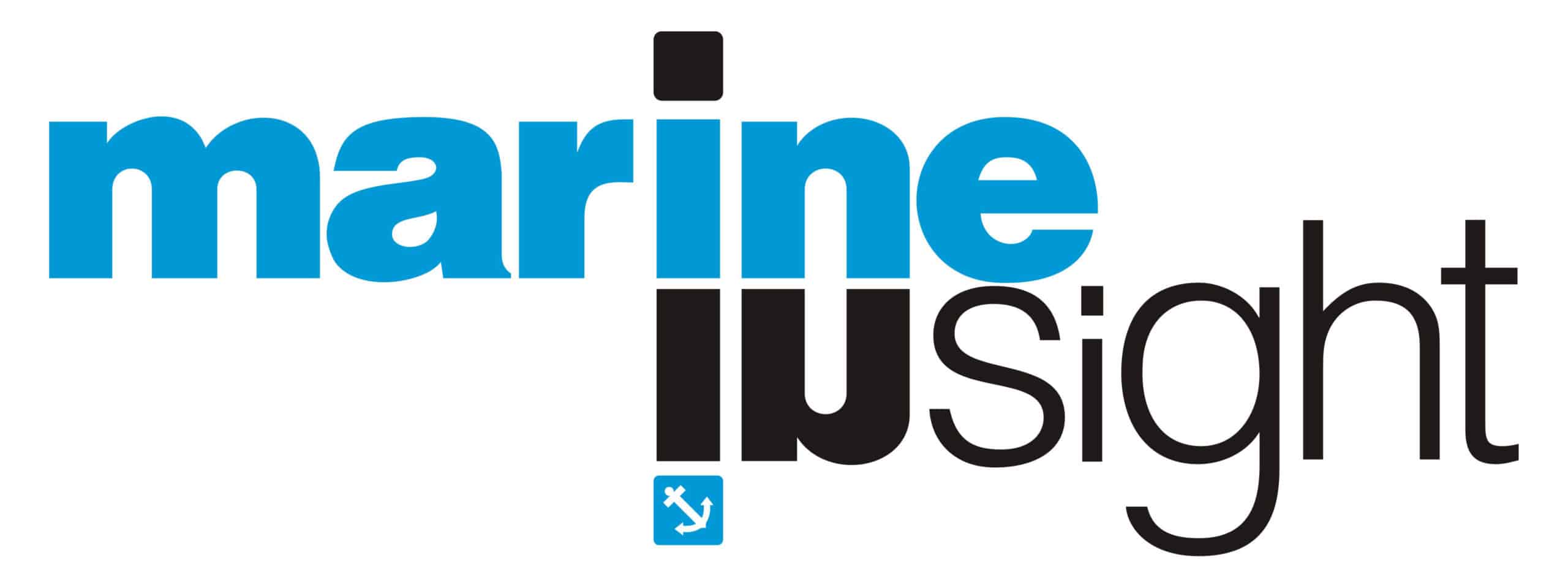



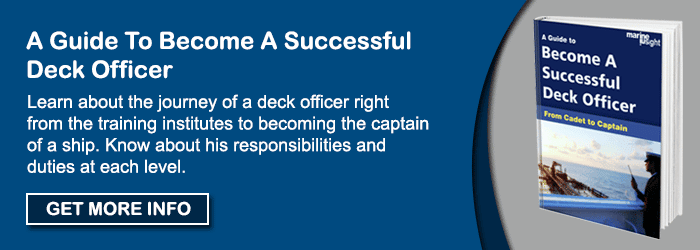
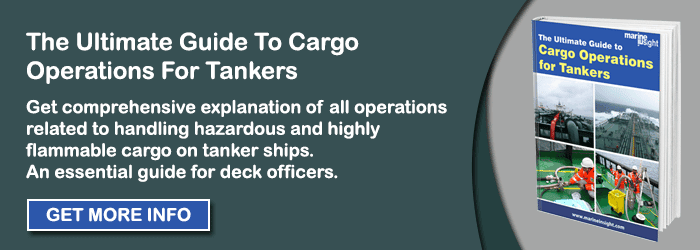
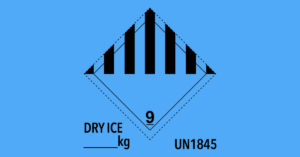
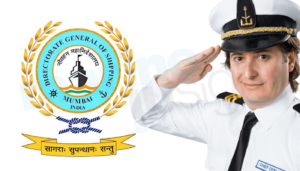
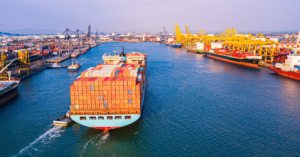
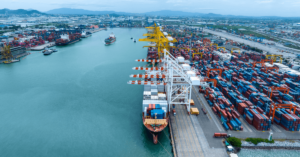
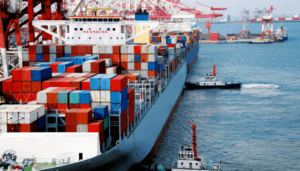
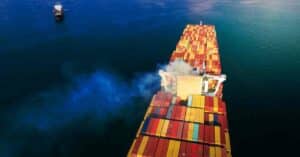
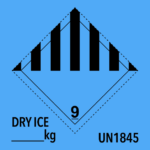
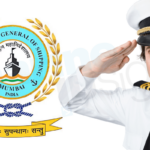
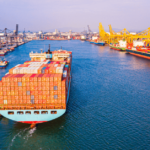
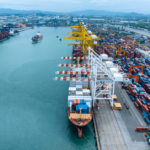
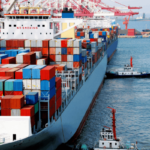
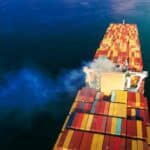
would you please send me marpole book
@ Nemat:
We do not provide Marpol ebook
can you please sehe send me the solas book
Would be great if up update the article
Two more new chapters added to solas as on 1 jan 2017
a.Verification of compliancw
b.Safety measure for ships ops in polar waters
My question is why solas ,
And can get five benefits of solas and marpol.
Good day;
Have a question in regard to cruise ships. Is there a law requiring all passenger hallways being free of any and all obstacles?
What i am looking at is some cruise lines want passengers to leave food trays in hallways ( to be picked up at the cruise lines convenience). In my view this is a potential tripping hazard. These trays are being placed on isle floor emergency lights.I feel these hallways should be free of any obstacles. Some lines seem to be ok with baby carriages and wheel chairs being left in hallways also. clear means of egress should be maintained.
If there is such a law, where would i find it.
Thank you
Edward A. Leddy
@Edward
200ft below the waves you jobsworth.
Get the SOLAS and MARPOL app from google play store those who want it. These are paid version and updated.
@Jim,
Sir you would be surprised how such seemingly minor things make a difference at the time of emergency.
Solas and Marpol are full of details regarding such fine details which might appear silly and petty to you.
I`m marine surveyor for 37 years attending many P&I clubs in Brazil, and owners/charterers bunkering and noted that barge`s team are not placing the contantion barrier is such position to avoid oil spill / pollution to sea.
I have search in SOLAS/IMO/Habour master and others sites an article / standards how contantion barrier must be placed around the barge and vessel during bunkering to avoid oil spiiled/pollution, but nothing noted.
I have noted hundred items to prevent oil pollution to sea, it is very important but not last because many of those items used to prevent pollution may fail (human errors or electronic/mechanic, ect..)
I have attend a case recently and confirmed that if barge`s team placed contation barrier in such condition / efficiently, the oil spilled / pollution should be controlled and easy cleanned and avoid seriously environment prejudices and high costs
As i have noted in those years attending as a surveyor during bunkering process, placing the contation barriers during bunkering seems that it is only to attend the protocols/conventions, it is not to really contain the oil spilled.
can you tell me the solas constructional difference in crude oil tanker and product tanker
Dear Sirs,
We are addressing you in a crisis and emergency situation, on behalf of the family of Captain Dino Miskic from Croatia and the family of sailors from Ukraine and the Philippines.
Captain Dino Miskic and 13 crew members sailed the Bourbon Rhode aboard the Las Palmas – Guyana route under the French Bourbon company. The voyage started on 9/17/2019 and the ship was due to arrive in Guyana on 10/3/2019. On 9/26/2019 the ship sank under yet unexplored circumstances and on 9/27/2019. search and rescue launched. Till 10/5/2019 3 sailors were rescued, 4 sailors were found dead and 7 sailors still to be found. Although as many as 7 crew members were not found, despite not finding 3 of the 4 life rafts used to rescue crew members and despite the information available of 7 crew members boarding the aforementioned liferafts, Bourbon Rhode dated 5/10/2019 announced the end of the quest.
We are addressing you this way because we hold that the suspension of the search for the 7 remaining crew members of the Borubon Rhode crew violates the human rights of these sailors and their families, first of all the right to life, as guaranteed by the human rights instruments, above all the Universal Declaration of Human Rights of the United Nations and Convention for the Protection of Human Rights and Fundamental Freedoms of Council of Europe. The right to life is a fundamental right of man. In the hierarchy of human rights, it is above and beyond all other rights. The right to life is absolute. The right to life is a part of civil and political rights and freedoms that must not under any circumstances be abolished or restricted, and we believe that Captain Dino Miskic and crew members have a right to life that should not be denied an unjustified suspension of their search.
The families of the 7 remaining sailors, as well as the public and citizens of the Republic of Croatia, believe that in the given circumstances, there is certainly reasonable hope that the persons in danger will be found and that there is no reasonable and justified reason to suspend the search after only 7 days. We believe that, in circumstances where there is a certain possibility of rescuing crew members, a series of international documents has been violated, notably the United Nations Convention on the Law of the Sea (UNCLOS Convention), the International Convention for the Safety of Life at Sea (SOLAS Convention), and the International Maritime Search and Rescue Convention (SAR Convention), which all point to the obligation of an appropriate and effective search and rescue at sea, that is, to quote the provisions of the International Maritime Search and Rescue Convention, obligation of State Parties to:
“Ensure that assistance is provided to any person in distress at sea… regardless of the nationality or status of such a person or the circumstances in which that person is found” (Chapter 2.1.10) “[…] provide for their initial medical or other needs, and deliver them to a place of safety (Chapter 1.3.2.). ”
By suspending the search, Bourbon Rhode and search and rescue authorities violate these international documents.
At present, in less than 24 hours, over 30,000 signatures have been collected in the Republic of Croatia to continue the search for missing crew members and we ask that you take all appropriate steps to continue the search for Captain Miškić and the Bourbon Rhode crew members, finally to be found.
Greetings,
Family and friends of missing seaman,
Done Reading
Good day please upload also the video for tank cleaning of tanker ships like purging, inerting, gas freeing, crude oil washing..thanks
Does SOLAS require conducting a hazard analysis, like MIL-STD-882E, CE Certification or MED Certification (new) do? If so, where exactly? Thanks a lot !